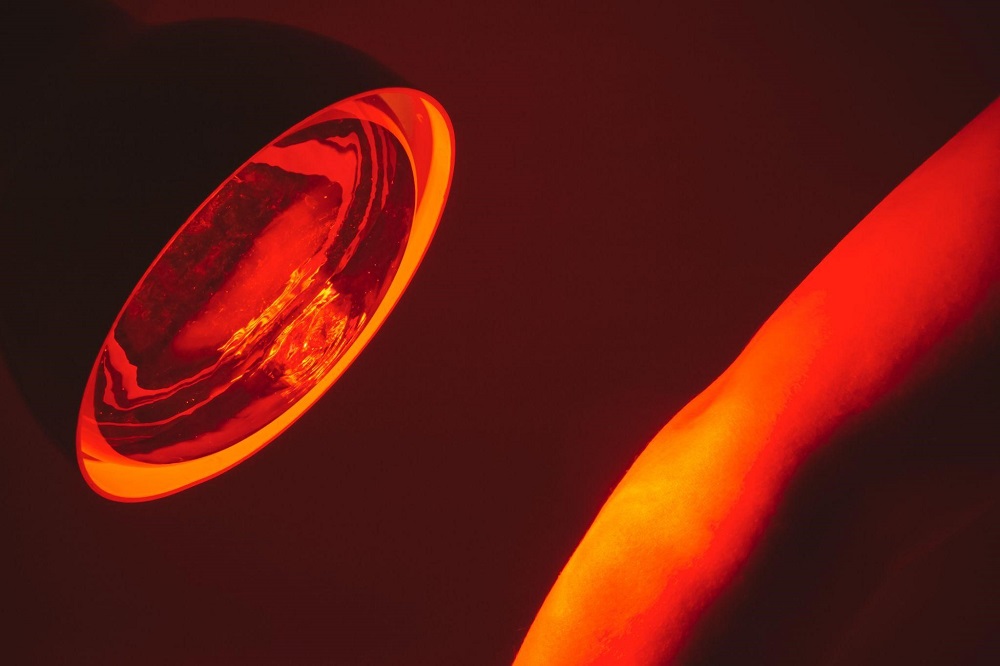If you’ve researched sauna technology, you may have encountered the terms infrared radiation (IR), infrared therapy, or, most commonly, infrared light. Infrared technology has become increasingly popular in today’s market, with infrared saunas at the forefront. However, few people take the time to understand what infrared light is and how it works before investing their time and money in this type of therapy.
In this article, we take a look at the technology behind infrared light and how saunas utilized this groundbreaking treatment to change the world of saunas.
Back To The Beginning
You may or may not remember the mnemonic ROY G BIV from high school science class. This mnemonic is a clever way to place the order of the colours in the rainbow, or in more scientific terms, the visible light spectrum.
For fun, let’s list those colours here: red, orange, green, blue, indigo, and violet.
This visible spectrum is the part of the electromagnetic spectrum that can be seen with the human eye, otherwise known as visible light.
And while many of us can see and name the colours in the light spectrum, only one person was able to discover the science behind them: William Herschel.

In 1800, Herschel hypothesized that different colours of light might also have different temperatures. Herschel placed a thermometer on each colour to prove his theory and measured the temperature difference. Herschel discovered that light on the red side of the spectrum measured warmer than light on the blue side.
When Herschel placed another thermometer just beyond the red side of the visible light spectrum, he noticed an even warmer temperature than what was measured at red. This was the first recorded discovery of the infrared wavelength.
What Is Infrared Light?

The first point about infrared light is that the human eye cannot see it. “Infra” red simply means “below” red. Or in the electromagnetic spectrum just below the point where the human eye can see it. Instead, infrared light is only felt as warmth or heat.
If it’s “red-hot” so that you can see the red, it’s no longer “infra” red. Infrared feels like a welcoming heat to humans. It’s like a warm hug. Red-hot feels repulsive, or like something you need to pull away from quickly.
Humans naturally emit infrared heat and we also absorb it. That’s why being in an infrared sauna is often described as feeling like a “hug”. It also feels like having “five more minutes in bed” in the morning. That’s because infrared heat is both emitted and absorbed in the comfort of your morning bed covers.
If we were to slip on a pair of night vision goggles or use an infrared sensing camera, parts of us would glow red, orange, blue, and purple to reflect the different temperatures emitted by our bodies.
In simpler terms, infrared light may be best understood when you think of radiant heat. Particular objects may appear cold to the naked eye, but as you get closer, you realize they are extremely hot (like charcoal on a grill).
How Was Infrared Light First Used?
If you’re interested in the first practical implementation of infrared light technology, you’d have to go back to 1929. The British Army developed the first infrared camera for anti-aircraft operations after World War I. Using thermal imaging, this camera was instrumental in defense tactics as it could detect enemy aircraft and combatants not otherwise visible to the naked eye.
Today, there are many common uses for IR light technology. Household items like remote controls use infrared light to signal televisions to adjust the volume or change the channel. If you’re a hunter, you may have used infrared light to spot your targets in lowlight areas. First responders such as firefighters, police, and search and rescue also use IR radiation regularly, especially in the form of thermal imagers.
How Was Infrared Light Adapted For Saunas?
As you may know, sauna therapy has been around for thousands of years. It’s uncertain where the first saunas were built, but the practice is thought to have originated around 2000 BC. At that time, saunas were rudimentary but effective.
Fires would be built inside naturally formed caves closed in with animal skins. Sitting inside these caves produced the same warming effect as saunas today.
While it’s unclear exactly where modern sauna therapy began, the history of the first infrared sauna is well-documented. John Harvey Kellogg had a passion for holistic health, and in 1893, Kellogg displayed his Incandescent Bath Lights at the World’s Fair in Chicago. People would enter a small cabin, bathe in these lights, and through excessive sweating, would experience detoxification. Kellogg’s bath lights were the predecessor to infrared saunas.
It would take until 1965 for a Japanese doctor to receive the first patent to create a ceramic infrared sauna. At this time, the only known users of infrared light therapy were Japanese doctors and healers. Many would use infrared lights to address muscle aches and pains in their patients.
When a patent is filed, information on how to use the patented technology becomes part of the public domain. This helped contribute to the global rise in the popularity of infrared saunas by the 1970s.
What Are The Benefits Of Infrared Saunas?

There are many benefits of infrared saunas. Regular IR exposure may boost users’ overall feelings of wellness, relaxation, and, of course, a more intense sweat session.
This is because, unlike traditional steam saunas, infrared saunas use infrared heat to penetrate the skin and warm the air around you. They don’t overheat your lungs or your core body temperature.
Additionally, infrared saunas operate at lower temperatures than traditional saunas. For example, a conventional sauna can reach temperatures of 100 degrees Celsius, while infrared saunas offer many of the same results at temperatures as low as 35 degrees Celsius. That’s less than your core body temperature of 37C. That’s why you can still breathe in an infrared sauna.
For users with adverse reactions to intense heat, an infrared sauna can produce the same results as a traditional steam sauna by coaxing a sweat in relatively cooler temperatures. With an infrared sauna, you may be able to extend your sweat session for longer.
Final Thoughts on Infrared Light
Are you ready to reap the wellness benefits of using infrared light inside your home? We would be happy to elaborate further on the infrared energy applications in our handbuilt saunas.
Contact us to discuss our options or custom-build your infrared sauna with us. From athletic saunas to commercial saunas to saunas especially made for you, we will work with your specific needs to create the ultimate retreat of detoxification and relaxation.


